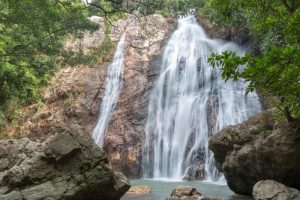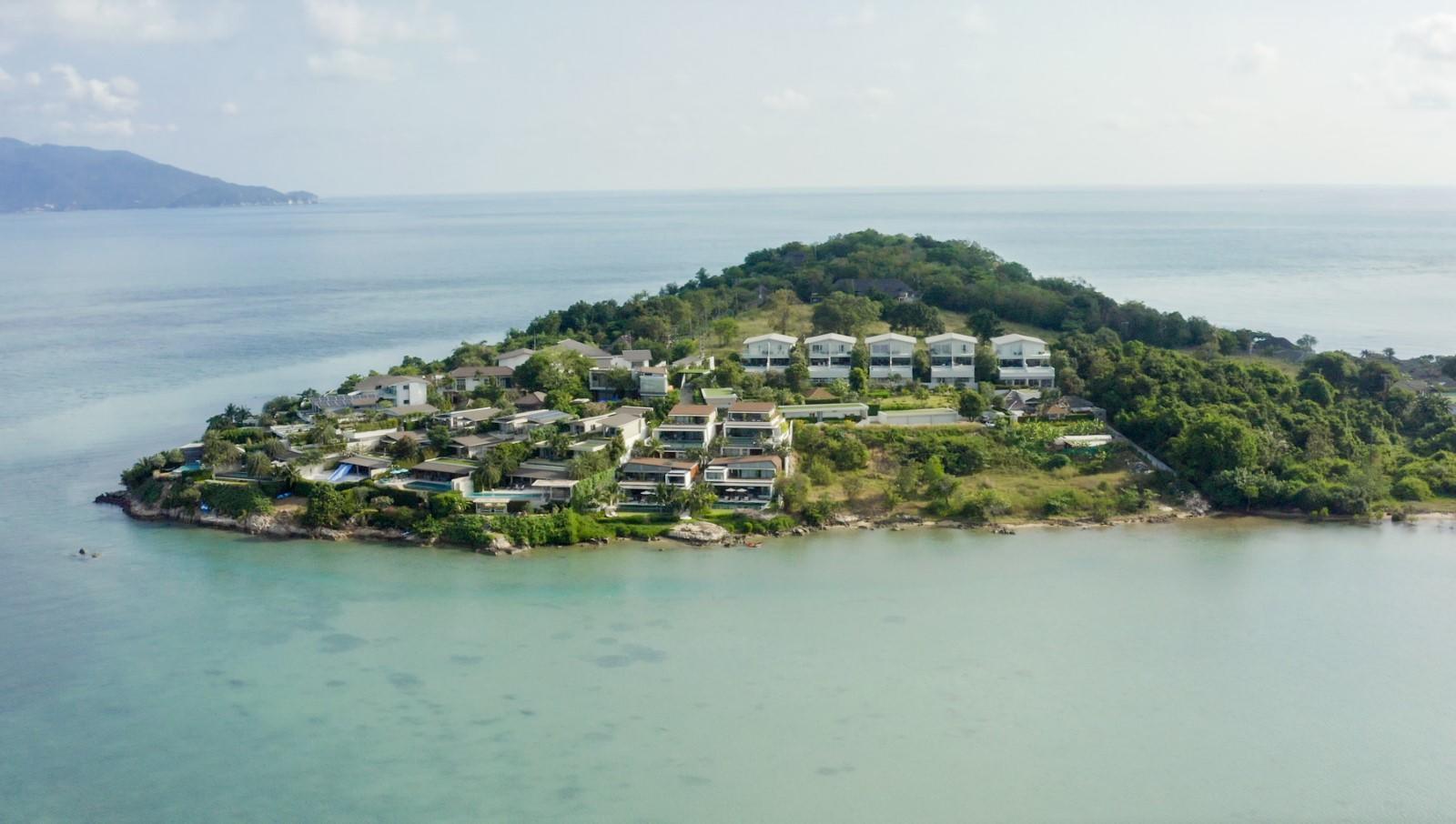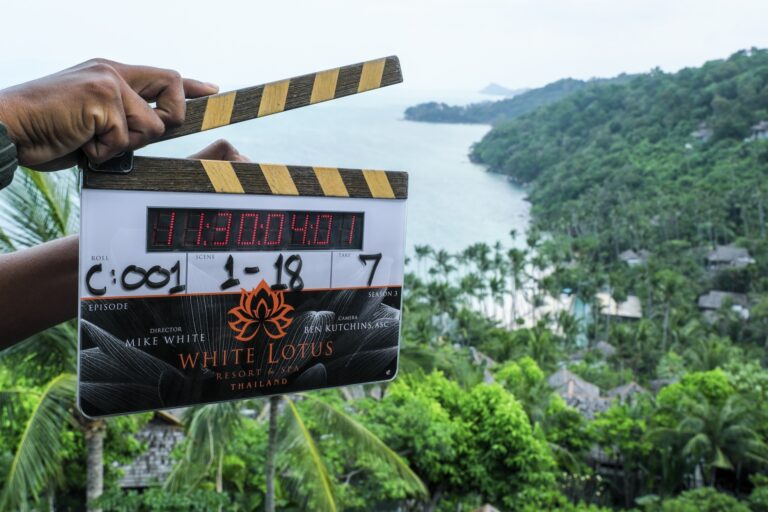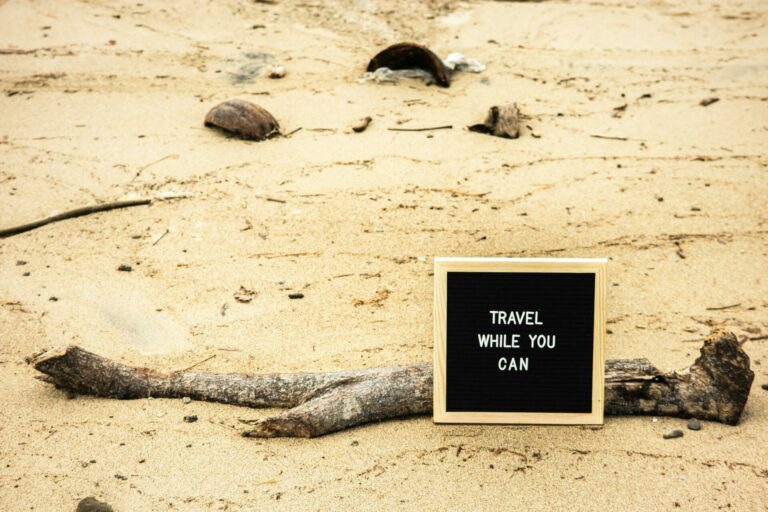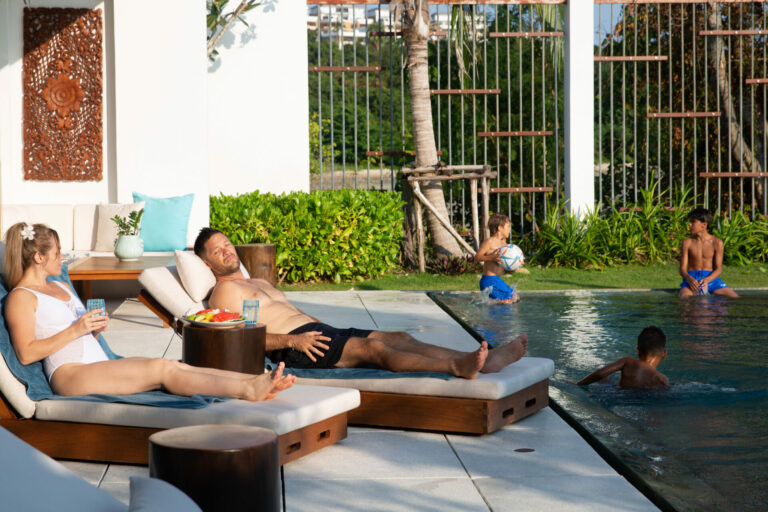Samui Island (Koh Samui) is a tropical paradise pretty well any time of year. On a lush mountainous hideaway out in the emerald waters of the Gulf of Thailand, warm sea air and beautiful flora are a given. The best time to visit depends primarily on how badly you want to avoid the rainy season. You’ll also want to consider your budget and your interest in Thai festivals and cultural experiences. To make the most of your trip, consider the following tips about the weather, annual cultural events, and cost considerations at different times of the year.
First, let’s consider the most important factor for a tropical getaway–the weather!
Understanding Koh Samui’s Climate
Samui Island is just off the east coast of southern Thailand and has a tropical climate, which means it’s warm all year and sees significant rainfall in heavy, short bursts. (Don’t knock the rain–it’s why the flora is so lush and varied, and a quick deluge can be just the cooldown you need on a hot beach day!)
While you can never predict the weather, it is quite possible to get a feel for Samui’s seasons in a quick summary. Aside from a short rainy season that peaks in November but can start as early as September, you can count on loads of sun and high temperatures throughout the year. Even with the rainy season included, the daily high temperatures range from 27-30 degrees year-round, so there is a very small spectrum of variation.
From December to February (the high season), you may see a few more days of rain but plenty of sun, while from February to May, you’ll encounter the least rain. The highest temperatures are from April through August, with a somewhat higher chance of rain from May on, though rains during that time of year tend to be short, warm storms that are often a welcome reprieve from the tropical sun. The heaviest rains come from September to November, peaking in November.
Weather Conditions
The Dry Season: Sun-Soaked Days and Starry Nights
From March to June Samui gets slightly warmer temperatures and less rain, so if you don’t mind the heat, love the sun, and prefer fewer crowds, this might be the ideal time for your getaway. March to June sees occasional rain showers, but they tend to be brief and refreshing and are often followed immediately by sunshine. Guests at this time of year might make a bit more use of the climate control back at the villa to get brief interludes of spa care or massage between stints in the sun and water.
Transition Periods: Finding the Balance in Koh Samui’s Climate
There’s a bit more rain in January and February, but most days, you’ll see calm, bright blue skies, gentle breezes, and warm air. This time of year is ideal for sun worshippers and water enthusiasts seeking crystal-clear waters for diving, snorkelling, or simply lounging by the beach.
Like in January and February, there are more days of rain in July and August. (twelve per month on average), but the rain is usually in short spurts. The beaches will be busy, the town will be bustling, and plenty of people will be in the restaurants and bars, so this is a lively time of year on Samui.
The Rainy Season: Refreshing Showers and Lush Landscapes
The low season brings occasional heavy rainfall and higher humidity levels to Samui. However, the rainy season has its own unique charm. While some beach activities may be interrupted by rainfall, this is when the island’s greenery is at its most lush, so it’s a great opportunity to get inland and enjoy the rainforest. If you’re a plant lover, the flora is truly amazing at this time of year.
Tourist Crowds and Availability
Seasonal Pricing: Navigating Koh Samui’s Cost Fluctuations
On Koh Samui Island the season dramatically affects the price. Especially over Christmas and New Years it is common for prices to be 2-3 times their regular price. Even though, the timing of the peak season has more to do with the Western holidays and Chinese New Year than the weather. Samui Island’s second high season comes at the peak of summer when northern hemisphere holiday-goers take advantage of the time off in their home countries, and southern hemisphere folks want to escape winter to flock to the sunny beaches of tropical Thailand.
Booking Smart: Tips for Securing the Best Deals:
If you are looking for a long-term villa rental or a last-minute deal the best time to travel to Koh Samui is in the low season from October-Early December. Hotel and villa providers competing for far less tourists will often discount their rates more than 50%. In fact, its a great time to use your bartering skills. You may find most rates are flexible during this period. The downside? Especially if you are only on a short trip, you may find that it’s cloudy your entire stay. Also, if you are looking for beach club parties and nightlife you might find many locations don’t have much going on.
Accommodation and Activities: Timing Your Reservations
Late December-February and July-August are the most popular and, you’ll want to book in advance for this time of year and expect to pay dearly for your accommodation. Low season has lots of great deals and last minute availability but it’s also very quiet, and it rains quite a bit. For many the best time of year to be in Koh Samui is the shoulder seasons (March-June and September) There are people around, but not too many. For example, it’s still possible to get a last-minute reservation at your favourite restaurant, but when you arrive it will likely be full and lively. Although not the cheapest time of year, there are still lots of deals to be had on accommodation. The only drawback is it is very hot. It is a great time to be in the water, but if you are planning more cultural sites and rainforests hikes this might not be the ideal time of year for you.
Festivals and Events: Celebrating Thai Culture
Songkran Festival (April):
Songkran, Thailand’s traditional New Year festival, is celebrated across the country, including Samui. Visitors to Samui in April (Songkran is on the 13th, but festivities extend to the 14th and 15th) will witness joyous water fights in the streets, symbolizing the cleansing of the past year and embracing the new. Pick up a water gun and get involved! This celebration provides a totally one-of-a-kind cultural immersion.
Samui Regatta (May/June):
Sailing enthusiasts and spectators flock to Samui in May or June for the annual Samui Regatta. This prestigious event features competitive yacht races against the backdrop of the island’s stunning coastline. Even for non-sailors, the regatta offers a cool spectacle with all kinds of awesome boats and a vibrant atmosphere.
Loy Krathong (November):
Odds are you’ve seen pictures of Loy Krathong, the festival of lights. This is when the island’s skies are filled with thousands of mesmerizing floating lanterns and the whole island is illuminated with decorations. Visitors can join locals in the tradition of releasing krathongs—decorative floats—into the sea, symbolizing letting go of negativity and making wishes for the future.
New Year and Chinese New Year (December-January)
While not specifically Thai, these New Year holidays are a big part of the peak season all over Thailand, specifically on the islands, and can be a ton of fun. This is when the biggest parties and celebrations and the most lively crowds will likely be found. It’s a great time to go into town for those who love nightlife and action. If you visit at this time of year, you’ll definitely want to book in advance.
Koh Samui’s Diverse Attractions: A Seasonal Activity Guide
There is always lots to do on Koh Samui. Enjoy the jungle by visiting an elephant sanctuary, mountain biking, hiking or enjoy a dip in one of Koh Samui’s fabulous waterfalls. On and in the water there are endless possibilities. Everything from a relaxing day on a beach to flyboard is available. An island boat cruise is also a popular option. For adventure seekers who need a day away from the water you’ll find a zipline, Golf course, Go Karting, and Tennis (Padel) courts. Koh Samui even has an urban centre where you can enjoy shopping, nightlife, gourmet dining, and VIP movie experiences.
Water Adventures: Best Times for Beaches and Underwater Exploration
Although it is true you can enjoy the beaches and water sports any time of year in Koh Samui, if that will be the main focus of your trip it is best to come from February-August. The dry season means more sun, the pivotal ingredient in all water activities. Koh Samui is famous for its scuba diving, snorkelling, island boat tours and fabulous beaches. You will find most of the main beaches have a variety of toys to keep it interesting. jet ski’s, flyboards, and banana boat tubes are easy to find.
Land-Based Explorations: When to Enjoy Koh Samui’s Inland Beauty
If you are more interested in cultural sites, jungle tours, and urban experiences you should travel between September-December. The rainy season brings cooler weather ideal for hiking and site seeing. The famous Big Buddha and the Secret Buddha Garden are just a few of the many cultural sites to explore. Koh Samui is also home to several famous Elephant Sanctuaries where you can spend a day learning about these magnificent beasts.
Finding Your Perfect Time to Visit
Choosing the best time to visit Samui depends on your preferences and interests:
For Sun-Seekers: The high season (July and August and January and February) offers optimal beach weather and clear skies. March to June is when you’ll see the highest temperatures and least amount of rain.
For Cultural Enthusiasts: Visiting during festival seasons like Songkran (April) and Loy Krathong (November) will provide annual cultural highlights and an immersive experience of Thai traditions and celebrations.
For Budget-Conscious Travelers: Consider the low season (October – Early December) for lower accommodation rates and fewer crowds. This is a great time to embrace the island’s natural beauty and tranquillity, do yoga, spend some spa time, and relax in your villa.
Insider Tips for Making the Most of Your Visit
Book Accommodation in Advance: Samui is a popular island. Once you’re here, you’ll see why! During peak seasons, securing your accommodations a few months in advance ensures you get your preferred choice and possibly better rates.
Pack for the beach and jungle: Regardless of the season, pack sunscreen, lightweight clothing, a raincoat or umbrella, and insect repellent to be prepared for Samui’s varying conditions.
Explore Beyond the Beaches: Venture into the island’s interior to discover its lush jungles, hidden waterfalls, and cultural sites. You won’t regret it, and it’s the perfect way to get a little exercise and variation.
In Conclusion
Samui Island welcomes travellers year-round, each season offering its own unique highlights. Whether you crave sunny days at the beach, culture, and nightlife, or peaceful moments of self-care in the glory of nature, Samui caters to diverse preferences. Consider the weather, events, and your budget when planning your visit to this incredible island, and we’re certain you’ll create unforgettable memories amidst the captivating beauty of Samui Island.








